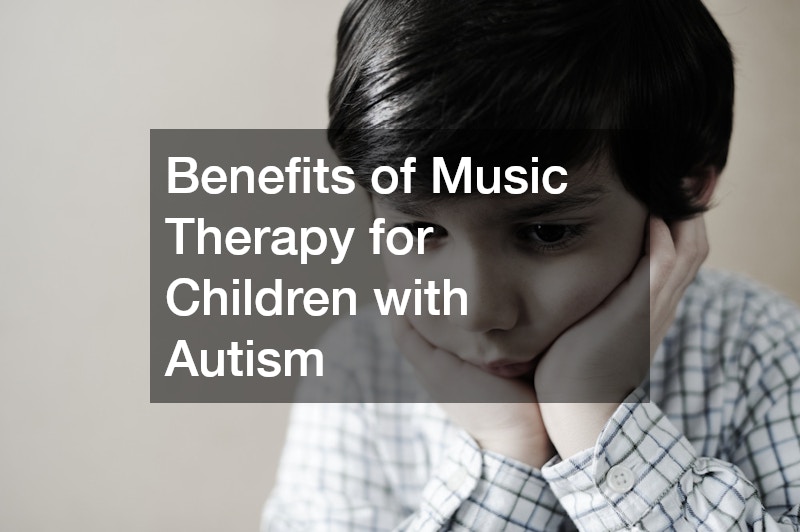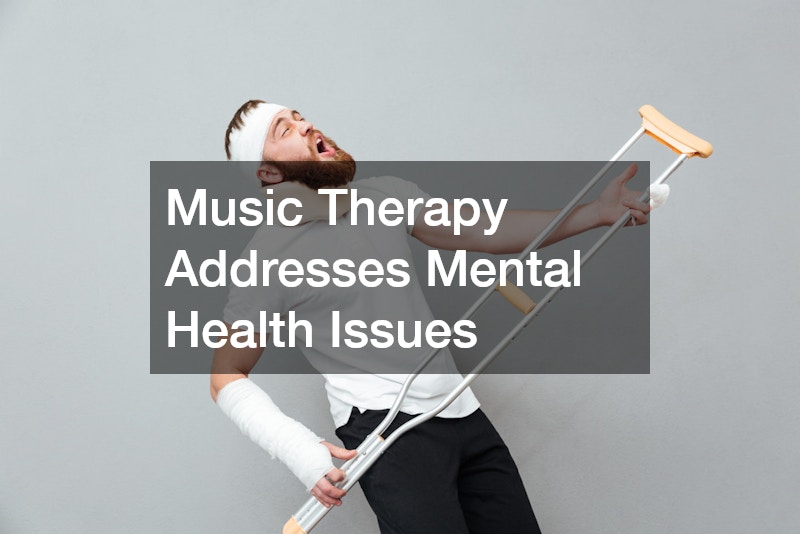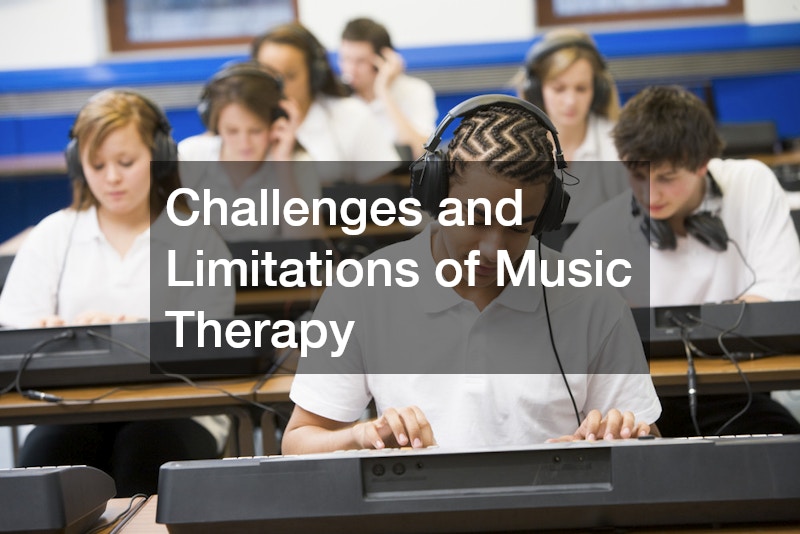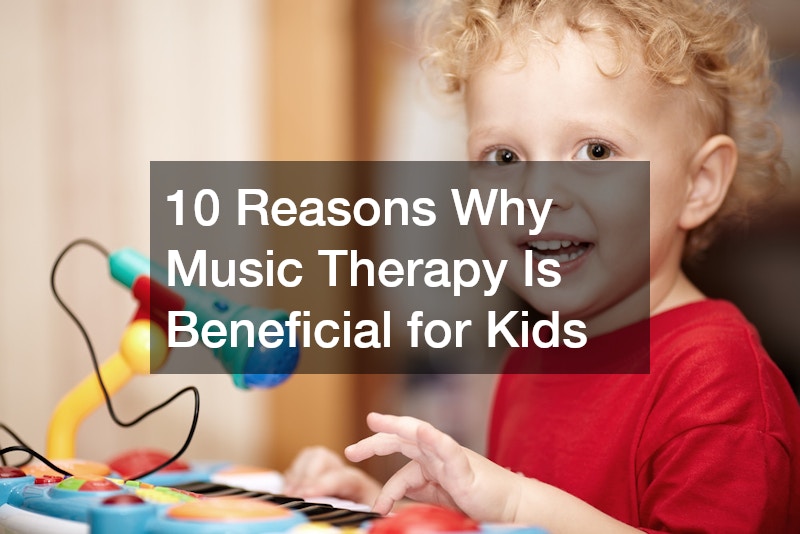
For children and teenagers, music therapy offers an innovative approach to healing and growth, utilizing the power of music to support emotional, cognitive, and social development. It is so vital in their growth to set those music therapy goals. As society increasingly recognizes the importance of mental health and emotional well-being, music therapy emerges as a powerful tool that addresses various challenges faced by young people today.
1. What is Music Therapy?

1.1 Definition and Explanation
Music therapy is a clinical and evidence-based practice where music is used to achieve specific therapeutic goals. It involves a licensed music therapist who assesses the needs of individuals and utilizes music interventions tailored to those needs. This could include creating, singing, or listening to music, which can lead to enhanced emotional expression and cognitive functioning. Unlike casual music enjoyment, music therapy is structured and goal-oriented, designed to improve various aspects of health and well-being In settings like child care centers and elementary schools.
1.2 Historical Background
The roots of music therapy can be traced back to ancient civilizations, where music was used as a healing tool in spiritual and medicinal contexts. In the modern era, music therapy gained recognition following World War II, as it was employed to help veterans cope with physical and emotional trauma. This rich historical background underscores music therapy’s enduring relevance and adaptability in addressing contemporary challenges faced by young people, such as those found in rehab therapy and local rehabilitation centers.
1.3 Key Components of Music Therapy
Music therapy is comprised of several key components, including assessment, treatment planning, and the implementation of music interventions. These components work together to create a personalized therapeutic experience tailored to each individual’s needs. Therapists may use instruments, songwriting, improvisation, and movement to engage children and teenagers effectively. Moreover, the inclusion of music in therapy makes the process enjoyable, thus increasing engagement and improving outcomes for participants in programs, including homeless teen programs.
2. Role of Music Therapy in Child Development
2.1 Cognitive Benefits
Music therapy has been shown to enhance cognitive development in children and teenagers through various activities that stimulate brain function. Engaging with music helps improve memory, attention, and problem-solving skills, essential cognitive abilities that contribute to academic success and everyday functioning. For instance, learning to play an instrument can sharpen a child’s ability to focus, while improvisation exercises can foster creative thinking and adaptability.
2.2 Emotional Growth
Emotional growth is a significant aspect of development during childhood and adolescence, and music therapy offers unique avenues for fostering this growth. Through music, children and teenagers can explore their emotions in a safe and supportive environment, enabling them to understand and articulate feelings that might otherwise be difficult to express. This process of emotional exploration is crucial for building resilience and coping mechanisms, particularly in the face of challenges such as divorce or family instability. In most cases, a Physician recruiter would be needed to connect the child to the right music therapist.
2.3 Social Skills Improvement
Music therapy also plays a vital role in enhancing social skills among children and teenagers. Group music therapy sessions, for instance, promote teamwork and cooperation as participants collaborate to create music together. This collaborative environment fosters communication, empathy, and understanding, allowing young individuals to practice social interactions in a supportive setting.
3. Music Therapy Goals for Teenagers
3.1 Emotional Regulation
One of the primary goals of music therapy for teenagers is to enhance emotional regulation. Adolescence is a time marked by emotional turbulence and identity exploration, making it essential for teenagers to learn how to manage their feelings effectively. Music therapy provides various tools and techniques, such as songwriting and improvisation, which help teenagers identify, express, and regulate their emotions.
3.2 Identity and Self-Esteem Building
Another important goal of music therapy for teenagers is the building of self-esteem and a strong sense of identity. Engaging in musical activities allows teenagers to explore their interests and talents, fostering a sense of accomplishment and pride. In therapeutic settings, they can experiment with different musical styles and genres, discovering what resonates with them.
3.3 Stress and Anxiety Management
In today’s fast-paced world, stress and anxiety have become increasingly common among teenagers. Music therapy offers a constructive outlet for managing these challenges, employing techniques that promote relaxation and mindfulness. For instance, listening to calming music or participating in guided improvisation can significantly lower stress levels and help teenagers cope with anxiety symptoms.
4. Benefits of Music Therapy for Children with Autism

4.1 Enhancing Communication
Music therapy has shown promising results in assisting children with autism, particularly in enhancing communication skills. Many children on the autism spectrum face challenges in verbal and non-verbal communication, making it difficult to express their needs and emotions effectively. Music therapy provides a non-threatening medium through which these children can communicate, using rhythm, melody, and lyrics to convey messages that might be hard to articulate otherwise.
4.2 Sensory Integration
Sensory integration is another critical area where music therapy can provide benefits for children with autism. Many children on the spectrum experience sensory processing difficulties, making it challenging to navigate their environments. Through tailored music interventions, therapists can create sensory-rich experiences that help children gradually acclimate to various sensory inputs.
4.3 Social Interaction Opportunities
Music therapy creates unique opportunities for social interaction among children with autism, which is essential for developing social skills. Group sessions allow these children to connect with their peers through shared musical experiences, fostering a sense of belonging and community.
5. Role of Music Therapy Play in School Settings
5.1 Classroom Behavior Management
In school settings, music therapy can serve as an effective tool for classroom behavior management. Teachers often face challenges in maintaining a positive learning environment, particularly with students who exhibit behavioral issues. Music therapy can help create a calm and focused atmosphere, using music to redirect energy and attention when needed. For instance, incorporating music during transitions or as a reward can help manage classroom behavior, leading to a more conducive learning environment and improving enrollment for all students.
5.2 Enhancing Academic Performance
Research has shown that music therapy can significantly enhance academic performance in children and teenagers. By integrating music into the learning process, educators can tap into students’ natural affinity for music to make lessons more engaging and memorable. Music has been linked to improved memory retention, concentration, and critical thinking skills, all of which are essential for academic success.
5.3 Reducing School Anxiety
School can be a source of anxiety for many children and teenagers, impacting their overall well-being and academic success. Music therapy offers strategies to reduce school-related anxiety, creating a sense of safety and support for students.
6. Specific Music Therapy Goals for Different Age Groups
6.1 Early Childhood Interventions
In the realm of music therapy, interventions are often tailored to suit the specific developmental needs of different age groups. For early childhood, music therapy goals may focus on enhancing communication, motor skills, and emotional expression. Activities such as singing simple songs, playing rhythmic games, and using instruments help young children develop foundational skills while enjoying the therapeutic process.
6.2 Adolescent Focused Techniques
As children transition into adolescence, music therapy goals shift to address the unique challenges faced by teenagers. During this period, issues related to identity, peer relationships, and emotional regulation become more pronounced. Music therapy techniques for adolescents often incorporate songwriting, group improvisation, and music analysis.
6.3 Tailoring to Individual Needs
One of the hallmarks of effective music therapy is its ability to be tailored to individual needs, regardless of age group. Each child or teenager presents a unique set of challenges and strengths, necessitating a personalized approach to therapy. Licensed music therapists conduct thorough assessments to determine the most appropriate interventions, ensuring that the therapy aligns with the individual’s goals and interests.
7. Music Therapy Addresses Mental Health Issues

7.1 Coping with Depression
Music therapy is a valuable resource for addressing mental health issues, particularly depression, which can significantly impact children and teenagers. Engaging with music allows individuals to explore their feelings and experiences in a non-judgmental environment, providing an outlet for emotions that might be difficult to articulate. Therapeutic techniques, such as songwriting or music listening, can help participants identify and process depressive symptoms.
7.2 Managing Anxiety Symptoms
Anxiety is another common mental health challenge among children and teenagers, and music therapy offers effective strategies for management. Through relaxation techniques integrated with music, individuals can learn to calm their minds and bodies, reducing anxiety symptoms in the process. Activities like guided imagery set to music or rhythmic breathing exercises can be particularly beneficial in helping young people manage anxiety.
7.3 Fostering Resilience
Fostering resilience is a crucial aspect of mental health support, and music therapy plays a vital role in this process. By encouraging self-expression and emotional exploration, music therapy helps young individuals develop a deeper understanding of themselves and their emotions. This self-awareness is a key component of resilience, enabling them to bounce back from setbacks and navigate life’s challenges more effectively.
8. What Are the Benefits of Group Music Therapy Sessions?
8.1 Promoting Teamwork and Cooperation
Group music therapy sessions provide an invaluable opportunity for children and teenagers to practice teamwork and cooperation. In these collaborative settings, participants engage in musical activities that require them to work together towards a common goal, such as creating a song or performing a piece. This shared experience fosters a sense of camaraderie and builds essential skills such as communication, negotiation, and compromise.
8.2 Peer Support and Shared Experiences
In addition to promoting teamwork, group music therapy sessions offer an avenue for peer support and shared experiences. Participants often find solace in knowing they are not alone in their struggles, as they connect with others facing similar challenges. This shared understanding can create a safe space for vulnerability, allowing individuals to express their emotions freely and authentically.
8.3 Collective Creativity Expression
Group music therapy also fosters collective creativity, enabling participants to explore their artistic expression collaboratively. Through improvisation and group composition activities, individuals can share their ideas and contributions, resulting in unique musical creations. This process encourages participants to think outside the box and embrace their creativity without fear of judgment.
9. Parents Support Music Therapy Goals
9.1 Creating a Musical Environment
Parents play a crucial role in supporting their children’s music therapy goals by creating a musical environment at home. This can involve incorporating music into daily routines, such as playing soothing tunes during bedtime or encouraging sing-alongs during family activities. By making music a regular part of their lives, parents can reinforce the skills and concepts learned in therapy sessions. Furthermore, providing access to musical instruments and encouraging exploration can enhance children’s social engagement. In addition,the parent’s health insurance plans, play a pivotal role in providing benefits to the child.
9.2 Encouraging Consistent Practice
Consistency is key in music therapy, and parents can help by encouraging regular practice at home. Whether it’s playing an instrument, singing, or engaging in musical games, consistent participation reinforces the therapeutic benefits experienced during sessions. Parents can set aside dedicated time for musical activities, making it a fun and enjoyable part of the family’s routine.
9.3 Collaboration with Therapists
Collaboration with music therapists is essential for maximizing the benefits of music therapy at home. Parents can maintain open communication with therapists to gain insights into specific goals and strategies that can be implemented in the home environment. By working together, parents and therapists can ensure that the therapeutic process is cohesive and aligned with the child’s needs.
10. Challenges and Limitations of Music Therapy

10.1 Limited Access and Resources
Despite its numerous benefits, music therapy faces challenges related to limited access and resources. Many communities, particularly those with fewer financial resources, may lack access to qualified music therapists and appropriate facilities. This limitation can hinder the availability of music therapy programs in essential settings such as wellness centers and local rehabilitation centers.
10.2 Individual Variability in Response
Another challenge in music therapy is the individual variability in response to treatment. While many children and teenagers benefit significantly from music therapy, others may not respond as positively, highlighting the need for personalized approaches. Factors such as personal preferences, cultural backgrounds, and specific needs can influence how individuals engage with music therapy.
10.3 Integration with Other Therapies
Integrating music therapy with other therapeutic modalities can also pose challenges. Many children and teenagers benefit from a multidisciplinary approach that includes counseling, occupational therapy, and other forms of support. However, coordinating these various therapies can be logistically complicated and may require significant collaboration among different professionals.
From enhancing cognitive development and emotional growth to providing vital social skills, music therapy plays an essential role in promoting the overall well-being of young individuals. As we continue to explore and expand its applications in various settings, including wellness centers, local rehabilitation centers, and schools, we can help ensure that all children and teenagers have the opportunity to benefit from the healing power of music.


